Navigation » List of Schools, Subjects, and Courses » Biology 2060 – Anatomy and Physiology II » Exam 4 Respiratory and Digestive System » Exam 4 Respiratory and Digestive System Questions
No Answers We dont have answer to this question yet. If you need help with your homework send us an email  or chat with our tutors
or chat with our tutors
Exam 4 Respiratory and Digestive System Questions
Exam 4 Respiratory and Digestive System Questions
1. The process by which bile salts break fat globules in the duodenum into much finer fat droplets
2. Hemoglobin is an important protein because it
3. For air to move into the lungs, pressure in the lungs must be atmospheric
4. Synthesizing glucose from amino acids is an example of:
5.
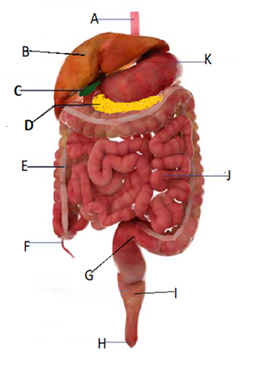
In the fig above, what letter represent the location of tineae coli?
6.
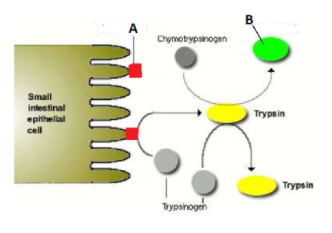
Which of the following best represents the enzymes labeled A and B, respectively
7.
Oxygen and carbon dioxide are exchanged through the respiratory membrane by
8.
The exchange of gases between the blood and alveoli of the lung is referred to as
9.
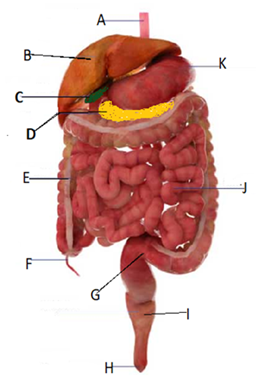
In the fig above, what letter (s) represents the location of plicae circularis and plicae semilunaris?
10.
The movement of digestion products, electrolytes, vitamins, and water across the GI tract epithelium and into the underlying blood and lymphatic vessels is called
11.
If an incision had to be made in the small intestine to remove an obstruction, which tunica would be cut into first and third respectively:
- muscularis
- serosa
- submucosa
- mucosa
12. Glucose, galactose and amino acid are absorbed by cotransport of H+ ions
13.
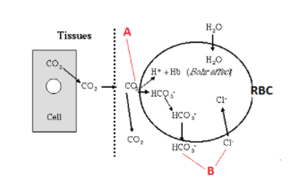
The phenomenon represented by the letter A is
14.
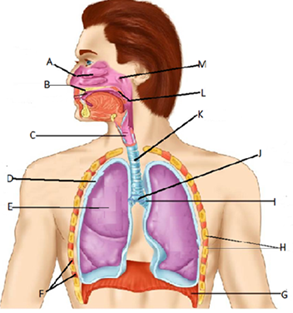
In the fig 2 above, which of the following is true of the structure labeled N?
15.
H2O + CO2 ============ H2CO3 ===========-H+ + HCO3-
The reaction above is called cellular respiration
16.
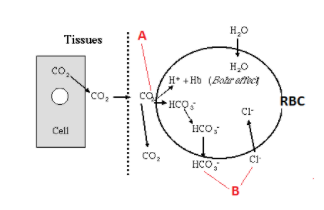
What is the phenomenon represented by the letter B?
17.
In which of these sequences does PO2 progressively decrease (high to low)?
18.
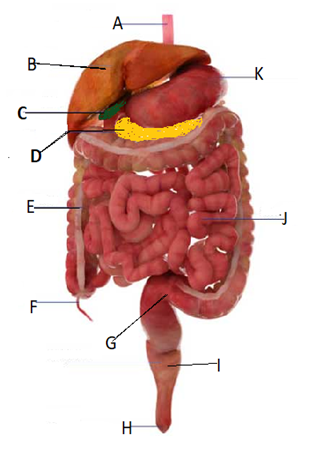
In the fig above, what letter (s) represents the location of maltase and aminopeptidase?
19.
Hydrogen ions from the blood are blocked from central chemoreceptors by:
20.
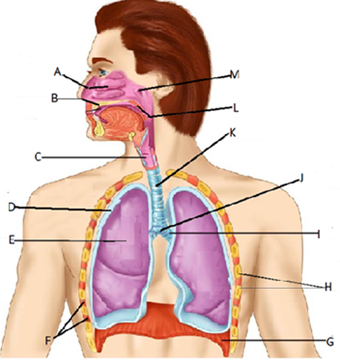
In the fig 1 above, what is the function of the structure represented by the letter E?
21.
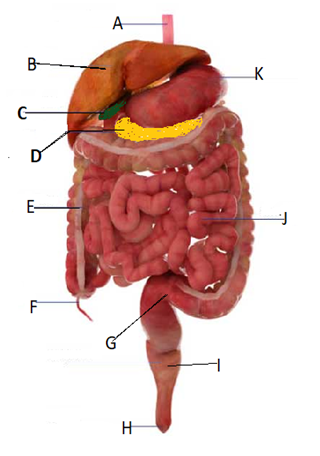
In the fig above, what letter (s) represents the location of parietal cells and Paneth cells?
22.
All of the following are brush border enzymes, EXCEPT:
23.
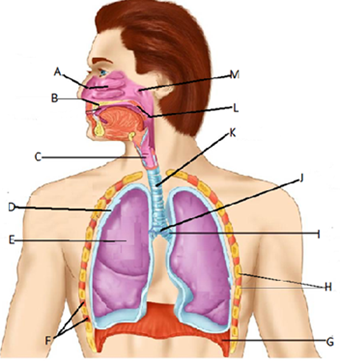
In the fig 1 above, what structure is represented by the letter A?
24.
Which of the following structures is NOT a part of the respiratory system?
25.
During expiration a decrease in thoracic cavity size causes a (an) in _pressure thus causing the lungs to recoil resulting in a (an) in pressure respectivel
26.
Which of the following is NOT considered a function of the respiratory system?
27 .
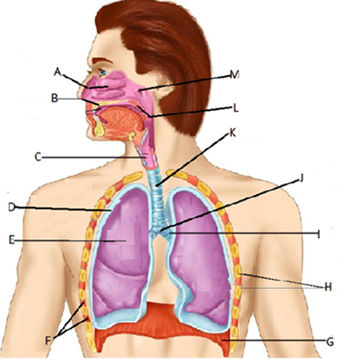
In the fig 1 above, what structure is represented by the letter L?
28.
All of the following are organs of the digestive system, EXCEPT
29.
Which of the following is found in the submucosa of the ileum of GI tract?
30.
If the left subclavian vein, which collects lymph, was blocked, which of these classes of nutrients would not enter the circulatory system at their normal rate?
31.
For air to leave the lungs during expiration
32.
Insulin release is directly related to blood glucose concentration
33.
The principal muscles responsible for involuntary inspiration are the:
34.
Arrange the segments of the colon in the sequence through which digested material passes prior to defecation: (1) sigmoid (2) transverse (3) descending (4) ascending (5) rectum (6) cecum
35.
Kupffer cells and Dust cells are special population of macrophages that can converts billurubin into bile, if the spleen is removed
36.
Cutting the phrenic nerve will result in
37.
Lipase enzymes are produced in small intestine, mouth, stomach, and pancreas
38.
The movement of air into and out of the lungs is called:
39.
Acini cells are found in all accessory organs such as the liver, pancreas and salivary glands
40.
The final molecular breakdown of most proteins and carbohydrates respectively are:
41.
Type I alveolar cells _________while Type II cells ________
42.
The physical law that states the total pressure exerted by a mixture of gases is the sum of the pressure exerted independently by each gas in the mixture.
43.
Laughing, crying and gasping are all types of modified breathing due to input from libic system to the respiratory center
44.
|
H2O + CO2 ============ H2CO3 ===========-H+ + HCO3- During respiratory physiology, the above reaction is seen in all of the following locations, EXCEPT:
|
45.
From deep to superficial, what are the tunics of the esophagus?
46.
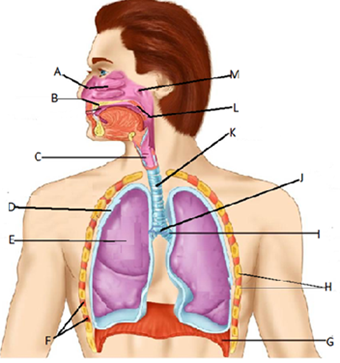
In the fig 1, what is the function of the structure represented by the letter C?
47.
All of the following are protein digesting enzymes, EXCEPT:
48 .
C6H12O6 + O2 ———– ATP + CO2 + H2O + Heat
The above reaction is called the acid-base equlibrium equation
49.
If the initial volume of gas Y=10cm3, and its final pressure = 40 mmHg, what would happen to the initial pressure, if the final volume = 20cm3? (Hint: V1 P1 = V2 P2)
50 .
Proprioceptors are located in lungs to prevent overdistention
51.
Passive expiration is preceded by the:
52.
Micelles and chylomicrons are molecules absorbed into the lacteal
53.
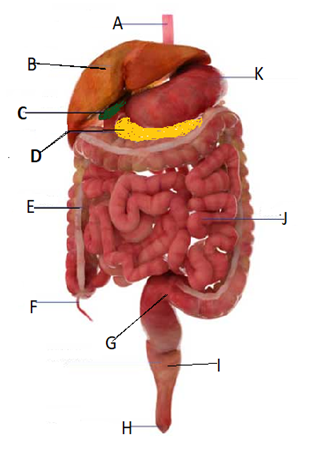
In the fig above, what letters represent the location of pepsin and trypsin, respectively?
54.
The negative ion which diffuses out of the red blood cell at the alveoli during the reverse chloride shift is
55.
Monoglycerides and fatty acids are further modified inside the absorptive columnar cells as:
56.
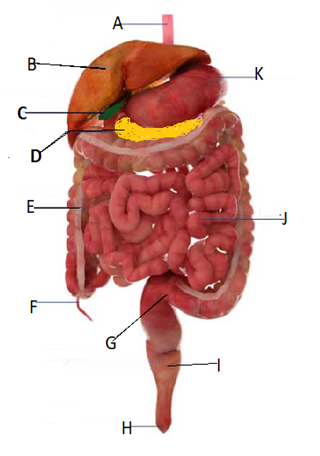
In the fig above, what structure is represented by the letter D?
57.
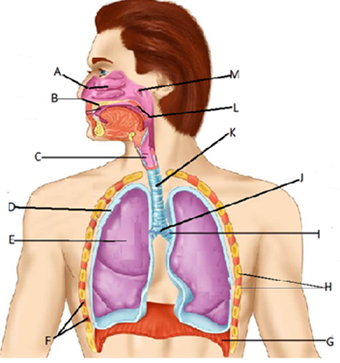
In the fig 1, what structure is represented by the letter M?
58 .
_____ is number of premolars in deciduous dentition of humans
59
|
Tommy’s threat to his mom that he will hold his breath until he dies, if he did not get the latest Playstation, is possible because of limitless breath-holding by the cortical reflex
|
60.
Breathing is more difficult in higher altitudes because the
61
Galactose and amino acid are both absorbed on the basal surface by
 or chat with our tutors
or chat with our tutors
